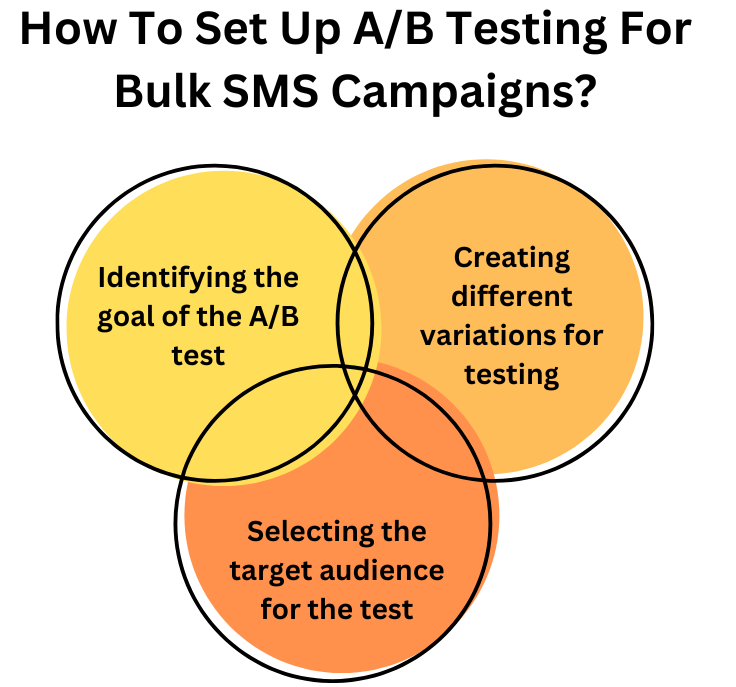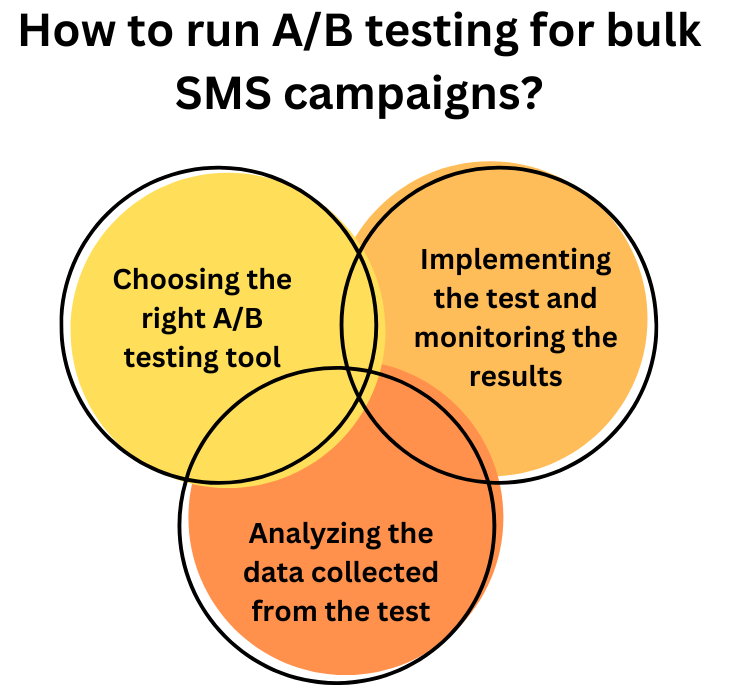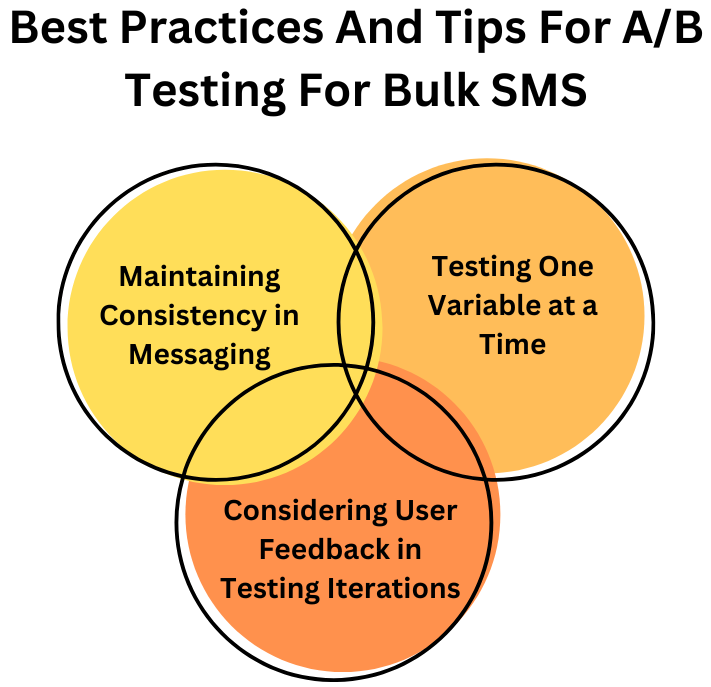A/B Testing Your SMS Campaigns For Optimal Results
A/B testing, or split testing, compares two versions of a webpage or app against each other to determine which one performs better.
A/B testing plays a crucial role in SMS campaigns, allowing marketers to test different elements to optimize campaign performance and improve conversion rates.
How To Set Up A/B Testing For Bulk SMS Campaigns?
There are three steps for setting up an A/B testing system for bulk SMS campaigns. You can follow these steps:
Identifying the goal of the A/B test
Before starting an A/B test, it’s crucial to clearly define what you want to achieve. List your goals like:
- Increasing click-through rates
- Improving conversion rates
- Enhancing user engagement
- Understanding the specific goal will help in designing the test effectively

Creating different variations for testing
Develop alternative versions of the element or feature you want to test. Ensure that each variation is distinct and serves the purpose of the test.
This could involve modifying images, changing button colors, or adjusting the layout of a webpage.
Selecting the target audience for the test
Determine the audience segment in which you want to expose the A/B test variations. This could involve segmenting based on demographics, behaviors, and past interactions with your website or product.
It’s important to consider the size and representativeness of the audience to obtain reliable results.
How to run A/B testing for bulk SMS campaigns?
When conducting an A/B test, there are several important steps to keep in mind:
Choosing the right A/B testing tool
Selecting the appropriate tool for your A/B test is crucial. Consider factors such as ease of use, statistical significance calculation, and the ability to handle different types of experiments.
Implementing the test and monitoring the results
Once you have selected the tool, it’s essential to properly implement the A/B test and closely monitor the results. This involves setting up the test parameters, and ensuring that the experiment is running smoothly.

Analyzing the data collected from the test
After the test has concluded, it’s important to thoroughly analyze the data collected. This involves examining the statistical significance of the results and drawing meaningful conclusions from the data to inform future decisions.
How To Interpret The Results Of A/B Testing?
Analyzing the data to determine if the observed differences are likely due to actual effects or just random chance.
Evaluating which variation performed the best based on the defined success metrics and making informed decisions on implementing the most effective one.
Extracting meaningful conclusions and actionable insights from the data to inform future strategies and decision-making processes.
When implementing changes, it’s important to focus on optimizing SMS campaigns by applying findings from previous campaigns.
This includes conducting regular A/B testing to ensure continuous improvement and tracking key metrics post-implementation to measure the effectiveness of the changes.
Best Practices And Tips For A/B Testing For Bulk SMS
Best Practices and Tips for Effective Messaging Consistency and Testing are as follows:
Maintaining Consistency in Messaging
1. Ensure that all communication and messaging across channels and platforms align with your brand voice and values.
2. Use consistent language, tone, and style to build trust and recognition among your audience.
3. Regularly review and update messaging guidelines to ensure alignment with current brand identity and market trends.

Testing One Variable at a Time
1. When conducting A/B tests or other experiments, focus on changing one element at a time to accurately measure its impact.
2. Avoid making multiple simultaneous changes, as this can make it difficult to isolate the effects of individual variables.
3. Document the specific variable being tested and the reasoning behind it to track and compare results effectively.
Considering User Feedback in Testing Iterations
1. Gather and analyze user feedback from testing cycles to identify pain points, preferences, and areas for improvement.
2. Use qualitative and quantitative data to inform testing iterations and adapt messaging based on user sentiment and behavior.
3. Integrate feedback mechanisms into ongoing testing processes to maintain a user-centric approach to messaging optimization.

